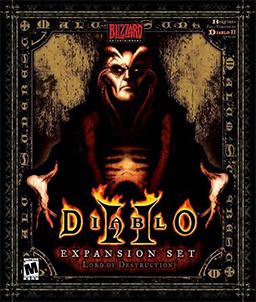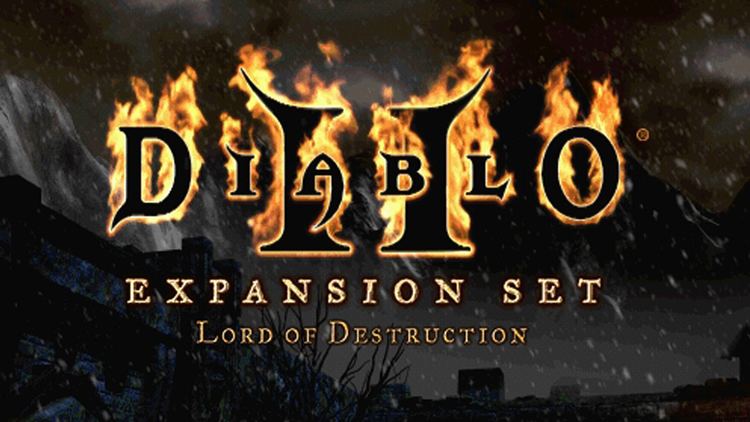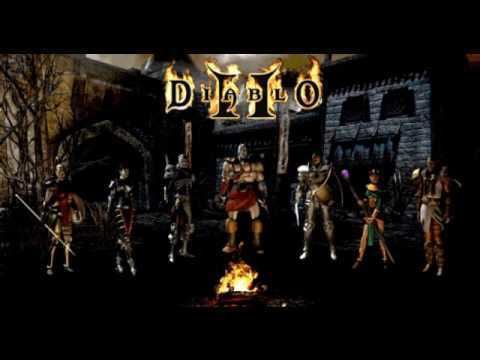8.8 /10 1 Votes
Director(s) Tyler Thompson Initial release date 27 June 2001 | 8.8/10 IGN | |||||||||||||||||||||||||||||||||
 | ||||||||||||||||||||||||||||||||||
Producer(s) Matthew HouseholderKenneth Williams Programmer(s) Theodore BissonPeter HuDoug McCrearyDivo PalinkasMichael ScandizzoSteven Woo Artist(s) Anthony RiveroAlex Munn Writer(s) Evan CarrollMatthew HouseholderChris MetzenJoe Morrissey Designers David Brevik, Max Schaefer, Erich Schaefer, Stieg Hedlund, Eric Sexton Publishers Blizzard Entertainment, Sierra Entertainment Similar Diablo games, Blizzard Entertainment games, Action role-playing games | ||||||||||||||||||||||||||||||||||
Cgrundertow diablo ii lord of destruction for pc video game review
Diablo II: Lord of Destruction is an expansion pack for the hack and slash action role-playing game Diablo II. Unlike the original Diablo's expansion pack, Diablo: Hellfire, it is a first-party expansion developed by Blizzard North.
Contents
- Cgrundertow diablo ii lord of destruction for pc video game review
- Features
- Story
- Assassin
- Druid
- Music
- Music inspirations
- Critical response
- References

Lord of Destruction added content in the form of two new character classes, new weapons and an addition of a fifth act, and also dramatically revamped the gameplay of the existing Diablo II for solo and especially multiplayer.

Features
Lord of Destruction adds a number of new features to the core gameplay of Diablo II. These include:

Story

After the player successfully ventures into Hell and defeats Diablo in Act IV, upon returning to the Pandemonium Fortress they are met by the Archangel Tyrael with an urgent summon. Tyrael opens a portal to Harrogath, a stronghold on Mount Arreat in the northern Barbarian Highlands. As shown at the end of Act IV, while two of the Prime Evils of Hell, Diablo and Mephisto, have been killed and their Soulstones destroyed at the Hellforge, their surviving brother Baal has impersonated Tyrael and retrieved his own Soulstone from the narrator Marius. Baal has raised an army and attacked Mount Arreat, whose Barbarian inhabitants are tasked with defending the Worldstone.
There are six quests in Act V. The player starts off at the stronghold of Harrogath. There are also ice caverns in the mountains, as well as hellish subterranean pits (reminiscent of Hell in Act IV) for extra monsters and experience. After reaching the summit of Arreat, the player gains access to the Worldstone Keep.
Many of the folk in Harrogath do not initially trust the player character (even if they are playing as the Barbarian class). The player has to slay Shenk the Overseer who is leading the assault in the Bloody Foothills in order to relieve the siege of Harrogath. The player can also rescue the captured Barbarian defenders. Completing these quests gradually helps the town inhabitants warm to the player and they will provide aid or other services.
The player soon discovers that one of Harrogath's councilors or Elders, Nihlathak, has made a deal with Baal to spare Harrogath in return for access to the Worldstone Keep. After rescuing Anya and learning of this betrayal, the player has to find and kill Nihlathak, who is sheltered between his minions in the Halls of Vaught.
Before gaining access to the Worldstone Keep, the player must defeat The Ancients, which are the three Barbarians - Talic the Defender, Madawc the Guardian and Korlic the Protector - guarding the Worldstone who allow only the worthy to pass. After the player succeeds, the Ancients warn that Baal is already into the Keep and has blocked Tyrael's presence.
Finally, the player fights Baal in The Worldstone Chamber, after defeating his pack of minions at the Throne of Destruction. Tyrael appears after Baal is dead, congratulating the player and opening a portal to Destruction's End, the conclusion of the game. As the Worldstone is corrupted by Baal, Tyrael has no choice but to destroy it before its power of Hell takes root.
Assassin
The Assassin relies on a mixture of martial arts skills and the ability to lay active traps. She can also open locked chests without the use of a key. The Assassin is voiced by Carrie Gordon Lowrey.
Her Shadow Disciplines tree contains a mixture of passive bonuses (such as Claw Mastery or Weapon Block) and buffs (such as Burst of Speed or Venom), along with a few spells such as Mind Blast which damage, stun, and confuse the enemy. She also can summon a Shadow Warrior or Shadow Master, which are useful summons that are also capable of dealing significant damage themselves.
The Traps tree provides a few direct attacks, and more importantly, a number of summonable traps. The traps are stationary devices that will attack any hostile target in range a certain number of times before breaking. Traps are either based on fire or lightning, though the Death Sentry trap can explode nearby corpses in addition to shooting bolts of lightning. The blade trap skills are essentially ranged projectiles that cause physical damage.
The Martial Arts tree consists of charge-up skills and finishing moves. Attacking with a charge-up skill increases the number of charges, up to three, then the finishing move releases the charges in a single powerful blow (note that a normal attack also counts as a finishing move). The charge-up skills include attacks like Blades of Ice and Fists of Fire, which add elemental damage to the finishing blow, and also skills like Cobra Strike, which adds life and mana stealing to the finishing attack. The finishing blows are, for the most part, kicks, such as Dragon Talon, which releases a number of kicks in quick succession, and Dragon Flight, which teleports on to a target and kicks them, releasing any charges.
Druid
The Druid specialises in nature-based magic and shapeshifting, with direct damage spells and a variety of minions. The Druid is voiced by Michael Bell.
The Elemental tree consists of the magic of earth and sky. The 'storm' spells have effects like Cyclone Armor, which protects the Druid from the elements, and Tornado, a vortex of swirling winds that moves somewhat randomly and can deal massive damage. The 'fire' spells are more earthly than the Sorceress's, with spells like Fissure and Volcano. The ultimate Elemental spells are Hurricane and Armageddon; both create a storm that follows the Druid, damaging all that come too close.
The Summoning tree governs the calling of natural allies to the Druid. While the wolves and grizzly the Druid can summon are traditional melee summons, the other summoning spells are a bit different. Ravens do marginal damage, but can blind enemies and cannot be targeted. Ravens disappear after they have attacked a certain number of times. The Druid can summon will-o-the-wisp-like spirits that provide Paladin-like Auras, increasing damage, life, or returning damage back to the attacker (like the Necromancer's Iron Maiden). The Druid also can summon one of three vines. These can poison enemies from below, or consume corpses to replenish the Druid's life or mana.
The Shape-Shifting tree gives the Druid the ability to become an animal, with gigantic bonuses to life. The Druid may either become a nimble Werewolf or a large Werebear. Each form has its own special attacks, such as the Werewolf's Feral Rage, which causes the Druid to get faster and faster as he continues to attack enemies, and the Werebear's Maul, which makes the Druid swing harder and harder during attacks. The Werebear is also able to obtain substantially more life and armor than the Werewolf is. It is worth noting that all of the Druid's equipment functions as normal when shifted, if at different speeds, but the druid is virtually unable to cast spells, except for Armageddon and summoning ones.
Music
The Diablo II: Lord of Destruction score was recorded in Bratislava, Slovakia with the Slovak Radio Philharmonic. Kirk Trevor of the Knoxville Symphony Orchestra conducted the sessions. The music for it was written in September 2000, it was the first time when Matt Uelmen worked with the orchestra. The orchestral session for Slovakia was in January 2001.
The style of the score is modern classical and experimental, trying to impose with a Wagnerian style.
Music inspirations
Critical response
Like its predecessor, Lord of Destruction received very positive reviews. It is listed at Metacritic with an average rating of 87 (with one perfect score from Computer Games Online). It is described at Metacritic as an expansion that "should reinforce the staying power of an already legendary RPG." GameSpot awarded the game an 8.2 out of 10, IGN administered the game an 8.8 out of 10 and Gamespy gave the game an 88 out of 100. The game has also won an award for being in the top 50 most important games of all time according to IGN magazine for its online multiplayer.
Within the Diablo II community the expansion caused some controversy when Blizzard patched the original game with an update that made Nightmare and Hell difficulties particularly harder than before; some players felt that Blizzard was effectively forcing them to upgrade to the expansion in order to find the items and gain the abilities necessary to deal with the new challenges.
